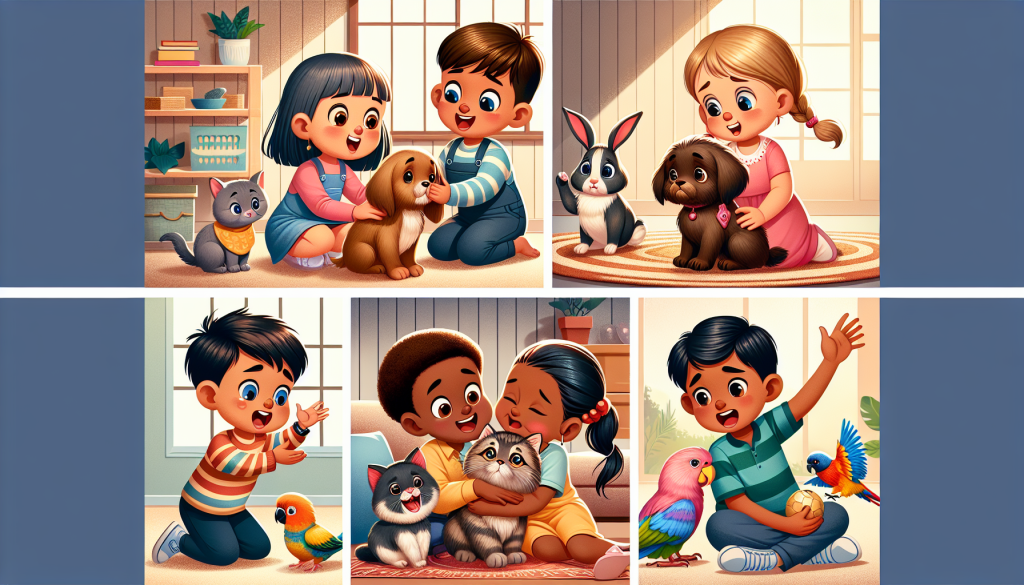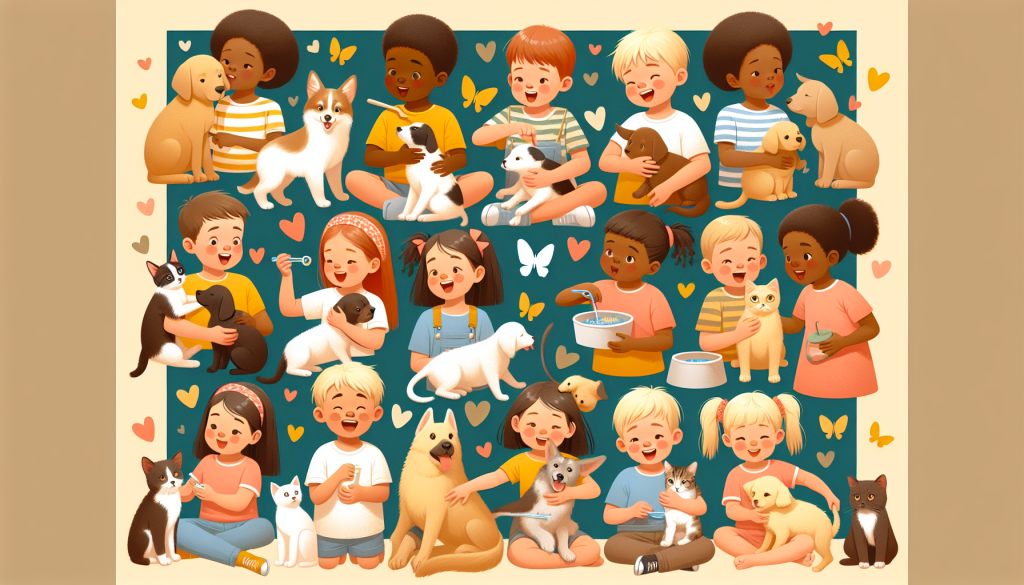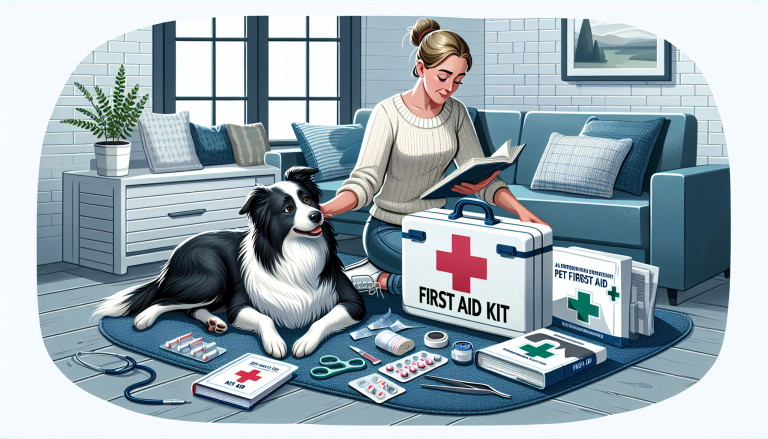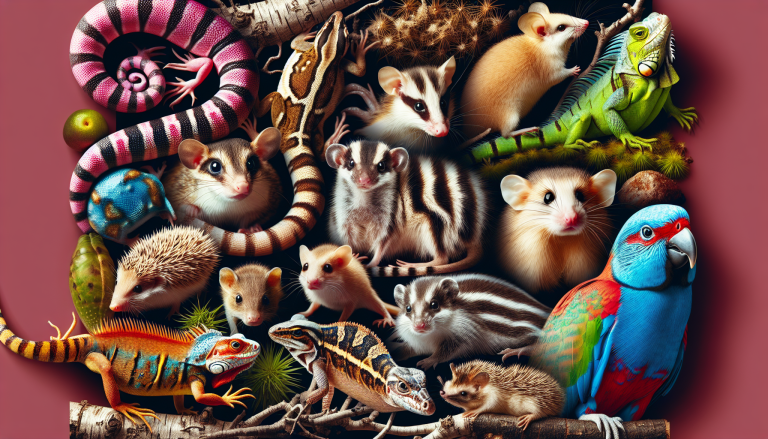Having a pet can bring immeasurable joy and countless benefits to a child’s life. From developing empathy and responsibility to promoting social skills, a furry friend can be a valuable companion for a child’s growth and development. Not only do pets provide unconditional love and companionship, but they also teach important life lessons and can even improve a child’s physical and mental well-being. In this article, we will explore 10 remarkable benefits that having a pet can bring to children, highlighting the positive impact it can have on their overall happiness and development. So, get ready to discover the amazing ways in which a pet can enhance your child’s life!
Table of Contents
ToggleCompanionship
Emotional support
Having a pet can provide children with valuable emotional support. Pets are non-judgmental and offer unconditional love and companionship, allowing children to feel accepted and secure in their relationships. Whether it’s cuddling up with a dog or talking to a cat, pets can be a reliable source of comfort and emotional support for kids.
Reduced loneliness
Pets can also help reduce feelings of loneliness in children. They provide constant company and become a friend that is always there, which can be especially beneficial for children who may struggle with making friends or who have siblings who are older or aren’t always available to play with. The presence of a pet can create a sense of belonging and alleviate feelings of social isolation.
Enhanced social skills
Having a pet can improve a child’s social skills as well. Pets provide opportunities for children to interact with others who share the same love and appreciation for animals, such as fellow pet owners, veterinarians, or other members of the community. This interaction can help children develop their social skills, such as empathy, respect, and effective communication, as they learn to care for and interact with their pets.
Responsibility
Teaching accountability
Owning a pet comes with a great deal of responsibility, which can be a valuable life lesson for children. Having a pet teaches kids accountability as they learn to feed, groom, and care for their furry friends. This responsibility helps children understand the consequences of their actions and the importance of fulfilling their obligations, both now and in their future endeavors.
Developing empathy
Pets can also help children develop empathy. Caring for animals requires understanding and responding to their needs, which encourages children to be more empathetic towards others. By taking care of their pets, children learn to recognize and empathize with feelings, needs, and emotions, ultimately fostering a sense of compassion that extends beyond their furry companions.
Learning to care for another living being
Having a pet provides children with a hands-on opportunity to learn about the needs and well-being of another living being. They learn to be responsible for someone other than themselves and understand the importance of providing care, attention, and love to ensure the health and happiness of their pets. This experience nurtures a sense of nurturing and caretaking that can extend to other aspects of their lives.
Physical health
Increased physical activity
Pets can greatly contribute to a child’s physical health by encouraging increased physical activity. Dogs, especially, require daily exercise, and taking them for walks or playing fetch in the backyard can motivate children to be more active. Engaging in physical activities with pets helps children develop healthy habits, improves their cardiovascular health, and prevents sedentary behavior.
Boosted immune system
Research suggests that having a pet can help boost a child’s immune system. Growing up with a pet increases exposure to different types of bacteria and allergens, which helps build a stronger immune system. This exposure can reduce the risk of developing allergies and asthma later in life, as their bodies become more familiar with potential triggers.
Reduced risk of allergies
Contrary to popular belief, studies have shown that children who grow up with pets are less likely to develop allergies. Early exposure to pet dander, fur, and saliva can actually reduce the risk of developing allergies by training their immune system to recognize and tolerate these substances. However, it’s important to note that some individuals may still be allergic to specific animals, so it’s essential to consider individual circumstances before introducing a pet into a household.
Emotional well-being
Stress relief
Pets have a remarkable ability to alleviate stress in both children and adults. Simply petting a dog or stroking a cat can trigger the release of oxytocin, a hormone associated with reducing stress and promoting a sense of well-being. Being in the presence of a beloved pet can enhance feelings of relaxation and calmness, helping children unwind from the pressures of school or other daily stresses.
Improved mood
The companionship of a pet can significantly improve a child’s mood. Pets provide constant love and support, offering a source of happiness and comfort. The unconditional love and loyalty pets offer can boost a child’s self-esteem and provide a sense of security, leading to improved overall mood and well-being.
Sense of purpose
Having a pet gives children a sense of purpose and responsibility. Knowing that they play a crucial role in taking care of their pets’ needs can give them a sense of importance and belonging. This sense of purpose not only helps children develop their sense of identity but also fosters a positive mindset, as they understand that their actions have a direct impact on the well-being of their furry companions.
Improved cognitive development
Enhanced learning abilities
Studies have shown that having a pet can enhance a child’s cognitive development. The responsibility of caring for a pet can improve a child’s problem-solving skills, critical thinking abilities, and decision-making capabilities. By actively engaging in activities such as training, cleaning, and feeding their pets, children develop skills that can be applied to other areas of their lives, fostering a well-rounded cognitive development.
Improved language skills
Interacting with pets can also promote the development of language skills. Children often find themselves talking, reading, or even singing to their pets, providing them with a non-judgmental audience to practice their communication skills. This frequent engagement improves vocabulary, pronunciation, and overall language development in a relaxed and enjoyable setting.
Boosted self-esteem
Pets can significantly contribute to a child’s self-esteem. They offer unwavering love and acceptance and provide a source of support and validation. This unconditional positive regard can boost a child’s confidence and self-worth, instilling a belief in their abilities and qualities. The continuous emotional support from a pet can reinforce positive self-perceptions and help children develop a healthy self-image.
Better social skills
Development of interpersonal skills
Interacting with pets can aid in the development of interpersonal skills. Pets help children learn how to navigate social interactions by providing a safe and non-threatening environment. Children can practice communication, cooperation, and empathy while engaging with their pets, which can then translate into their interactions with friends, family, and peers.
Improved communication skills
Having a pet as a companion can improve a child’s communication skills. Children often communicate with their pets through simple commands, gestures, or even body language. This helps them develop clear and effective communication skills as they learn to express their needs and expectations in a way that their pets understand. These improved communication skills can then be applied to their relationships with others.
Enhanced empathy and compassion
Pets can teach children the value of empathy and compassion. By observing and caring for their pets, children learn to be attentive to the needs and feelings of others. This understanding and compassion can extend beyond their pets to encompass their interactions with people, helping them build meaningful relationships and fostering a kind and caring nature.
Enhanced academic performance
Improved focus and attention span
Research suggests that children who have pets tend to have improved focus and attention span. The responsibility and routine that come with caring for a pet can help children develop discipline and concentration skills. This increased focus can translate into better academic performance and a greater ability to stay engaged with tasks and responsibilities.
Increased motivation and responsibility
Having a pet can increase a child’s motivation and sense of responsibility towards their academic pursuits. By witnessing the effort and dedication required to care for a pet, children develop a similar mindset towards their schoolwork. The need to prioritize and manage their time effectively in order to fulfill their pet’s needs can instill a sense of responsibility that extends to their educational endeavors.
Better problem-solving skills
Caring for a pet involves solving various problems and challenges. Children often need to find innovative solutions to ensure their pets are safe, healthy, and happy. This constant problem-solving encourages critical thinking skills, creativity, and adaptability. As children learn to overcome obstacles in their pet’s care, they develop the resilience and problem-solving abilities necessary for success in academic and personal situations.
Teaching life lessons
Learning about birth and death
Owning a pet provides children with the opportunity to learn about the cycle of life, including birth and death. The experience of witnessing the birth of puppies, kittens, or even the hatching of baby birds can teach children about reproduction, the miracle of life, and the importance of nurturing and caring for living beings. Additionally, experiencing the loss of a pet can help children understand and cope with the concept of death.
Understanding the circle of life
Having a pet allows children to witness the stages of life firsthand. From infancy to old age, pets age alongside their owners, providing children with a tangible understanding of the circle of life. This understanding can cultivate a deeper appreciation for the fleeting nature of life and the importance of cherishing loved ones and making the most of each moment.
Dealing with loss and grief
The loss of a pet can be a challenging and emotional experience for children, but it also provides an opportunity for growth and resilience. Learning to cope with the loss of a beloved pet can help children develop healthy mechanisms for handling grief, loss, and emotions. It teaches them that it is okay to mourn and grieve, and that it is possible to heal and move forward while still cherishing the memories of their cherished pet.
Sense of security
Feeling protected and safe
Having a pet can provide children with a sense of security. Pets create a comforting presence within the home, offering a sense of protection and safety. Knowing that their furry companion is nearby can help children feel more secure when they are alone or facing uncertain situations. This sense of security can provide children with peace of mind and a comforting feeling of being cared for and watched over.
Reduced anxiety and stress
Pets have a remarkable ability to reduce anxiety and stress in both children and adults. The soothing presence of a pet can help lower cortisol levels, a hormone associated with stress. Simply petting a dog or cuddling a cat can release endorphins that promote relaxation and calmness, helping children cope with anxiety-provoking situations and reducing overall stress levels.
Building trust and loyalty
Pets can play a significant role in building trust and loyalty in children. The unconditional love and loyalty pets offer foster strong bonds and teach children the value of trust in relationships. Pets provide a consistent and reliable presence in their lives, showing children the importance of trust, commitment, and dependability. These valuable life lessons pave the way for healthy and fulfilling relationships in the future.
Building a bond
Creating lifelong memories
Having a pet can create lifelong memories for children. From the funny antics and playful moments to the deep connections and heartwarming experiences, the bond formed with a pet can provide children with cherished memories that last a lifetime. These memories serve as a reminder of the love, joy, and companionship pets bring into their lives, even long after their furry friends have passed away.
Unconditional love and companionship
One of the most significant benefits of having a pet is the unconditional love and companionship they provide. Pets offer a unique type of relationship that is pure and unwavering. They offer a listening ear without judgment, a comforting paw, and a constant presence that can bring immense joy and comfort to a child’s life. The love and companionship pets offer can have a profound impact on a child’s emotional well-being and overall happiness.
Building a special connection
The bond formed with a pet can be incredibly special and unique. Pets have a way of understanding their owners’ emotions and providing comfort and support in times of need. This special connection between a child and their pet can be irreplaceable, offering comfort, solace, and a source of strength throughout their lives. The trust, loyalty, and shared experiences create a deep and unbreakable bond that can positively shape a child’s life for years to come.
In conclusion, having a pet can bring numerous benefits to children’s lives. From emotional support and reduced loneliness to enhanced social skills and responsibility, pets offer valuable life lessons and opportunities for personal growth. Additionally, they contribute to better physical health, emotional well-being, cognitive development, and academic performance. Pets provide a sense of security, help children build meaningful connections, and create lifelong memories of unconditional love and companionship. Whether it’s a dog, cat, fish, hamster, or any other furry or feathered friend, the presence of a pet can have a profound and positive impact on a child’s life.








